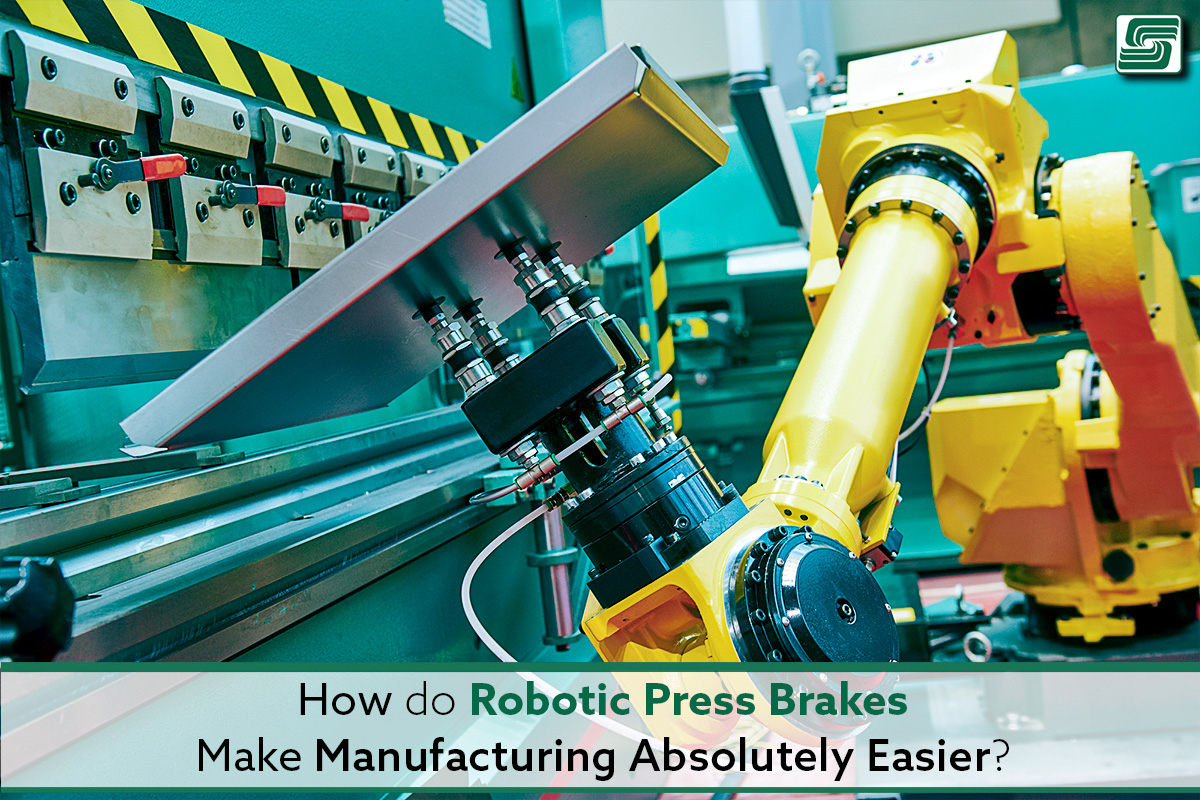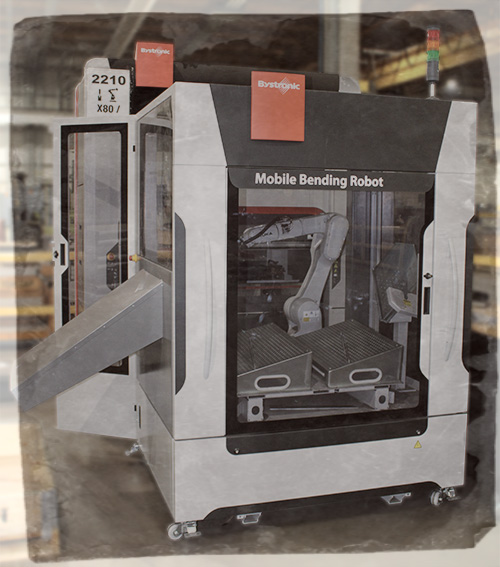
Our current economy is heading for rough waters, and material costs and freight are causing headaches for manufacturers. Some metal fabrication companies are considering increasing capacity without paying for building expansions.
One simple solution has been the advent of robotic press brakes.
We expect manufacturers to focus on improving operational efficiency and boosting production. Robotic press brakes have emerged as one of the most promising solutions for manufacturers.
With the help of robotic press brakes, manufacturers achieve significant gains in operational efficiency and production rates. They streamline the entire process of manufacturing by integrating various advanced features.
With the help of robotic press brakes, manufacturers can improve accuracy and reduce setup time.
What are Robotic Press Brakes?
A robotic press brake is a machine that implements a robotic arm to perform various pressing functions. It enables manufacturers to automate pressing processes, which allows them to save time and money.
A robotic press brake is a computer-controlled machine that applies force to parts by pressing them between a die and a bed. Robotic press brake manufacture parts for automobiles, aerospace, shipbuilding, and other industrial sectors.
3 Ways a Robotic Brake Helps
Reduce Human Error
The more manual parts of your production process, the more opportunity for human error. A robotic press brake helps to reduce human error in several ways.
 A robotic press brake is programmable and produces the same part with consistent accuracy. It also adjusts to compensate for operator error.
A robotic press brake is programmable and produces the same part with consistent accuracy. It also adjusts to compensate for operator error.
The machine compensates if the operator accidentally uses too low or too high force.
That means a robotic press brake produces quality parts every time, even if the operator is new or making a mistake.
Robots also don't get tired or distracted. A production line pauses while an operator takes a break, slowing production.
A robotic press brake runs 24 hours by programming, requiring no rest and helping consistently meet production goals.
Increase Productivity
A robotic press brake dramatically increases your production capabilities. With a press brake, you get one shot at forming each part.
The press brake brings the metal sheet down onto the part to be formed, finishing the part.
However, robotic press brakes are programmed to move metal sheets without continually forming them.
This process allows the machine to form multiple parts, making no adjustments to the machine after the first part is formed.
Thus, a robotic press brake forms multiple parts while only taking up the same amount of space as one press brake.
Just like a robotic press brake runs 24 hours a day, it can also be programmed to run as quickly as possible, forming parts to meet production schedules.
Produce Tighter Tolerances
Consistent tolerances are essential when manufacturing parts. If different parts have different tolerances, they may not work together correctly, reducing durability.
A robotic press brake allows you to set the exact pressure that forms each part, meaning you set tighter tolerances for each part.
If you're manufacturing something that must fit together perfectly, having tighter tolerances is critical.
A robotic press brake also reads the thickness of the sheet of metal and makes minor adjustments to compensate for any thickness variations: even if your sheet metal supplier has some slightly thicker or thinner sheets than others, the robotic press brake compensates.
Types of Robotic Press Brakes
Pick-and-place robotic press brakes
Pick-and-place robotic press brakes are ideal for manufacturing smaller parts. These machines have a vision system and an automated arm that handles small components and allows the robot to view the part.
In addition, these robots include a suction cup, a gripper, and a vacuum table programmed to pick up a part and place it at the required location.
Blind robotic press brakes
Blind robotic press brakes are used to manufacture larger parts. These presses have vision systems; however, some make smaller parts using blind robotic press brakes.
However, these types of presses can't be used for precision work.
Robotic Press Brake Key Features
- Maximal pressing force: Robotic press brakes with around 50 tons of pressing force are suitable for manufacturing bigger parts.
- Automatic feeding: Robotic press brakes feed raw materials automatically, making them suitable for high-production environments.
- Automatic loading of dies: The robotic press brake loads the dies automatically, making them suitable for low-production environments.
- Automatic ejection of the finished part: the press brakes eject the finished part automatically, making them suitable for high-production environments.
Who Should Use Robotic Press Brakes?
Manufacturers looking to improve operational efficiency and boost production should invest in robotic press brakes. Robotic press brakes manufacture a wide range of parts, including small and large components.
Robotic press brakes perform various tasks, including loading, unloading, and palletizing, which help manufacturers improve accuracy and save time, which conventional presses can't do.
In Sum
Robotic press brakes have emerged as one of the most promising solutions for manufacturers. They manufacture various parts, including small and large components, helping manufacturers improve operational efficiency and boost production.
These press brakes are valuable equipment for any manufacturing company. They reduce human error, increase productivity, and produce tighter tolerances. As the manufacturing industry becomes more competitive, staying on top of production is crucial.
A robotic press brake helps you do just that.